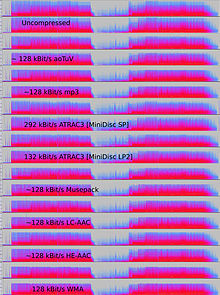Theory

The theoretical basis for compression is provided by information theory and, more specifically, algorithmic information theory for lossless compression and rate–distortion theory for lossy compression. These areas of study were essentially created by Claude Shannon, who published fundamental papers on the topic in the late 1940s and early 1950s. Other topics associated with compression include coding theory and statistical inference.
Machine learningedit
There is a close connection between machine learning and compression. A system that predicts the posterior probabilities of a sequence given its entire history can be used for optimal data compression (by using arithmetic coding on the output distribution). An optimal compressor can be used for prediction (by finding the symbol that compresses best, given the previous history). This equivalence has been used as a justification for using data compression as a benchmark for "general intelligence".
An alternative view can show compression algorithms implicitly map strings into implicit feature space vectors, and compression-based similarity measures compute similarity within these feature spaces. For each compressor C(.) we define an associated vector space ℵ, such that C(.) maps an input string x, corresponds to the vector norm ||~x||. An exhaustive examination of the feature spaces underlying all compression algorithms is precluded by space; instead, feature vectors chooses to examine three representative lossless compression methods, LZW, LZ77, and PPM.
According to AIXI theory, a connection more directly explained in Hutter Prize, the best possible compression of x is the smallest possible software which generates x. For example, in that model, a zip file's compressed size includes both the zip file and the unzipping software, since you can't unzip it without both, but there may be an even smaller combined form.
Data differencingedit
Data compression can be viewed as a special case of data differencing. Data differencing consists of producing a difference given a source and a target, with patching reproducing the target given a source and a difference. Since there is no separate source and target in data compression, one can consider data compression as data differencing with empty source data, the compressed file corresponding to a difference from nothing. This is the same as considering absolute entropy (corresponding to data compression) as a special case of relative entropy (corresponding to data differencing) with no initial data.
The term differential compression is used to emphasize the data differencing connection.
Comments
Post a Comment